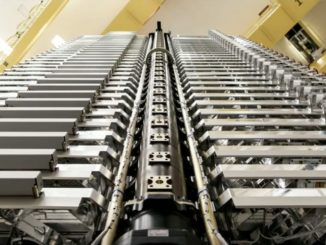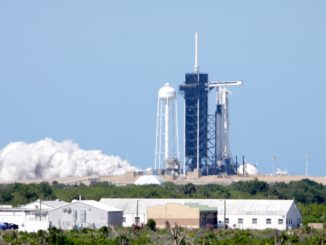
SpaceX reached a new reusability milestone with its Falcon 9 rocket with a Starlink launch from Florida on Friday night. The first stage booster, tail number B1062, launched for a record 21st time, the first in SpaceX’s rocket fleet to do so.
The launch of Starlink 6-59 mission added 23 more satellites to the growing low Earth orbit internet constellation and was the company’s 36th dedicated Starlink launch of the year.
Since making its debut in November 2020, B1062 launched two GPS satellites, eight astronauts over two missions (Inspiration4 and Ax-1) along with 13 Starlink flights. To date, it sent 553 payloads to orbit, including the two Crew Dragon spacecraft.
Prior to its May 17 flight, it most recently launched about a month ago on the Starlink 6-49 mission. Like last time, about 8.5 minutes after liftoff, B1062 landed on the SpaceX droneship, ‘A Shortfall of Gravitas.’ This was the 70th booster landing using ASOG and the 309th Falcon 9 booster landing to date.
According to the most recent statistics published by expert orbital tracker and astronomer Jonathan McDowell, as of the morning of May 17, there were 6,017 total Starlink satellites on orbit and 5,941 in operation.
Prior to the launch of the Starlink 6-59 mission, a total of 6,436 satellites launched to LEO with 788 going up in 2024.

Starship Flight Four development
While SpaceX was preparing for its Friday night Falcon 9 launch, it has also been busy down in southern Texas working towards the fourth integrated flight test of its Starship rocket.
The nearly 400-foot-tall rocket was stacked at the launch pad at SpaceX’s Starbase facility on Wednesday, May 15. The following day, it conducted a partial wet dress rehearsal where it practiced loading liquid methane and liquid oxygen onboard the vehicle.
A launch license from the Federal Aviation Administration (FAA) allowing for the next flight test of the vehicle is still pending, but in a May 11 reply on X (formerly Twitter), SpaceX founder Elon Musk suggested that a launch was “probably three to five weeks” away.
In an event hosted by the Harlingen Economic Development Corporation on May 14, Kathy Leuders, SpaceX’s Starbase general manager, said they are working towards having a license by the end of May or beginning of June.
“We’re going be ready as always. We’re going to have the vehicle stacked and the first day we get that license, we’re going to fly,” Leuders said.
She also noted in her talk that have also begun testing Starship rockets beyond the fourth flight. In response to an audience question, she addressed an issue on Ship 31 captured by LabPadre’s cameras, which shows a pulsating flashing coming from the rocket.
“We were testing our next round of vehicles, next round of Starships and we had a test anomaly that we’re assessing right now and understanding what does that mean,” Leaders said. “We’re always working on vehicles, but when there’s a problem on a vehicle that’s in the flow, you want to make sure that you can separate the cause of that problem from your flight vehicle. And so what the teams are doing right now is really going in and saying is it the same design exactly? Is there some other reason for us to have separation to make sure we’re not going into a flight test with there being an issue.”
While SpaceX hasn’t commented further on the anomaly, by moving forward with the wet dress rehearsal on May 16, they likely either fixed the issue or feel comfortable that it would not impact Ship 29, which is being used on IFT-4.




